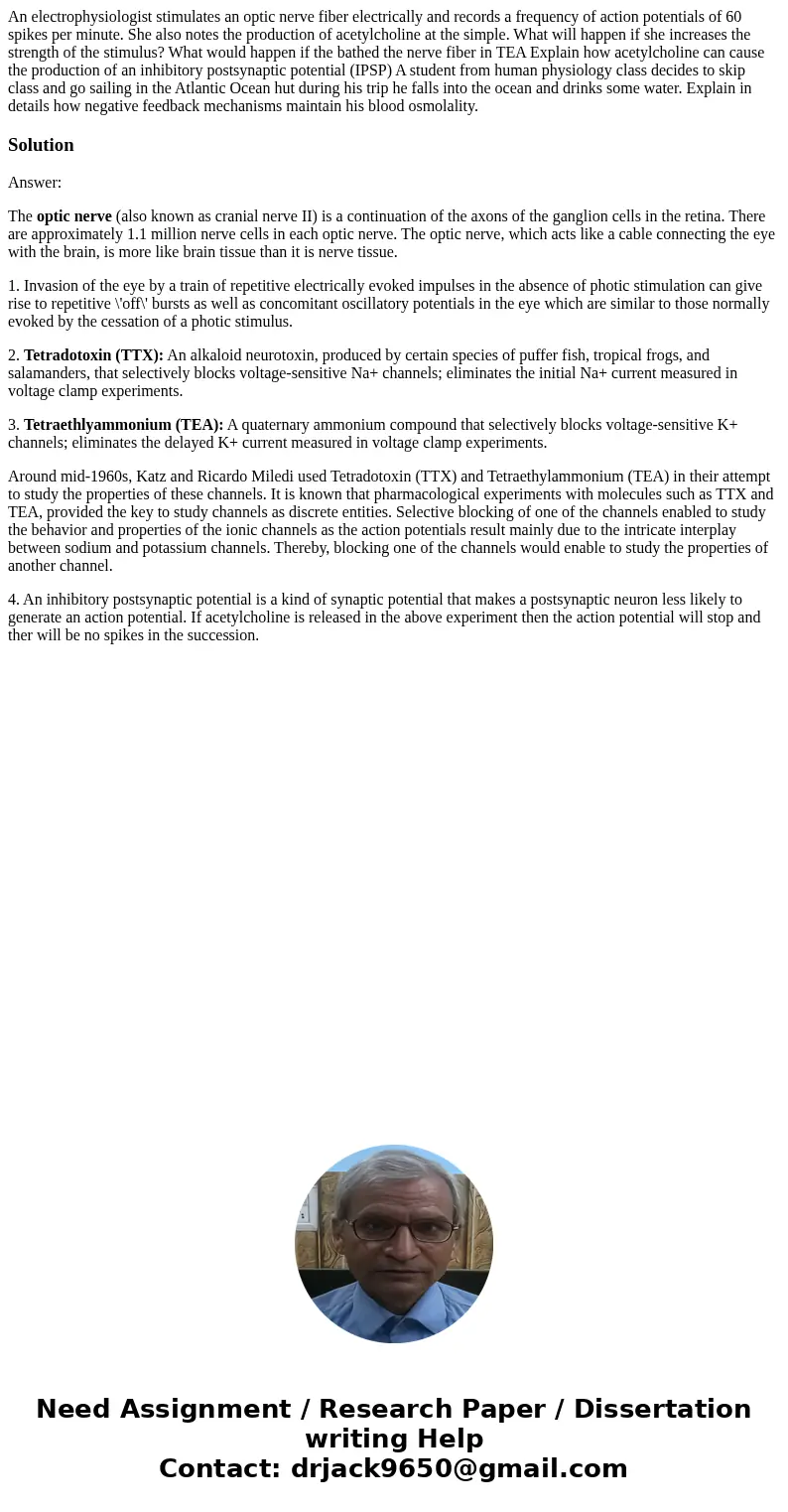An electrophysiologist stimulates an optic nerve fiber elect
Solution
Answer:
The optic nerve (also known as cranial nerve II) is a continuation of the axons of the ganglion cells in the retina. There are approximately 1.1 million nerve cells in each optic nerve. The optic nerve, which acts like a cable connecting the eye with the brain, is more like brain tissue than it is nerve tissue.
1. Invasion of the eye by a train of repetitive electrically evoked impulses in the absence of photic stimulation can give rise to repetitive \'off\' bursts as well as concomitant oscillatory potentials in the eye which are similar to those normally evoked by the cessation of a photic stimulus.
2. Tetradotoxin (TTX): An alkaloid neurotoxin, produced by certain species of puffer fish, tropical frogs, and salamanders, that selectively blocks voltage-sensitive Na+ channels; eliminates the initial Na+ current measured in voltage clamp experiments.
3. Tetraethlyammonium (TEA): A quaternary ammonium compound that selectively blocks voltage-sensitive K+ channels; eliminates the delayed K+ current measured in voltage clamp experiments.
Around mid-1960s, Katz and Ricardo Miledi used Tetradotoxin (TTX) and Tetraethylammonium (TEA) in their attempt to study the properties of these channels. It is known that pharmacological experiments with molecules such as TTX and TEA, provided the key to study channels as discrete entities. Selective blocking of one of the channels enabled to study the behavior and properties of the ionic channels as the action potentials result mainly due to the intricate interplay between sodium and potassium channels. Thereby, blocking one of the channels would enable to study the properties of another channel.
4. An inhibitory postsynaptic potential is a kind of synaptic potential that makes a postsynaptic neuron less likely to generate an action potential. If acetylcholine is released in the above experiment then the action potential will stop and ther will be no spikes in the succession.

 Homework Sourse
Homework Sourse